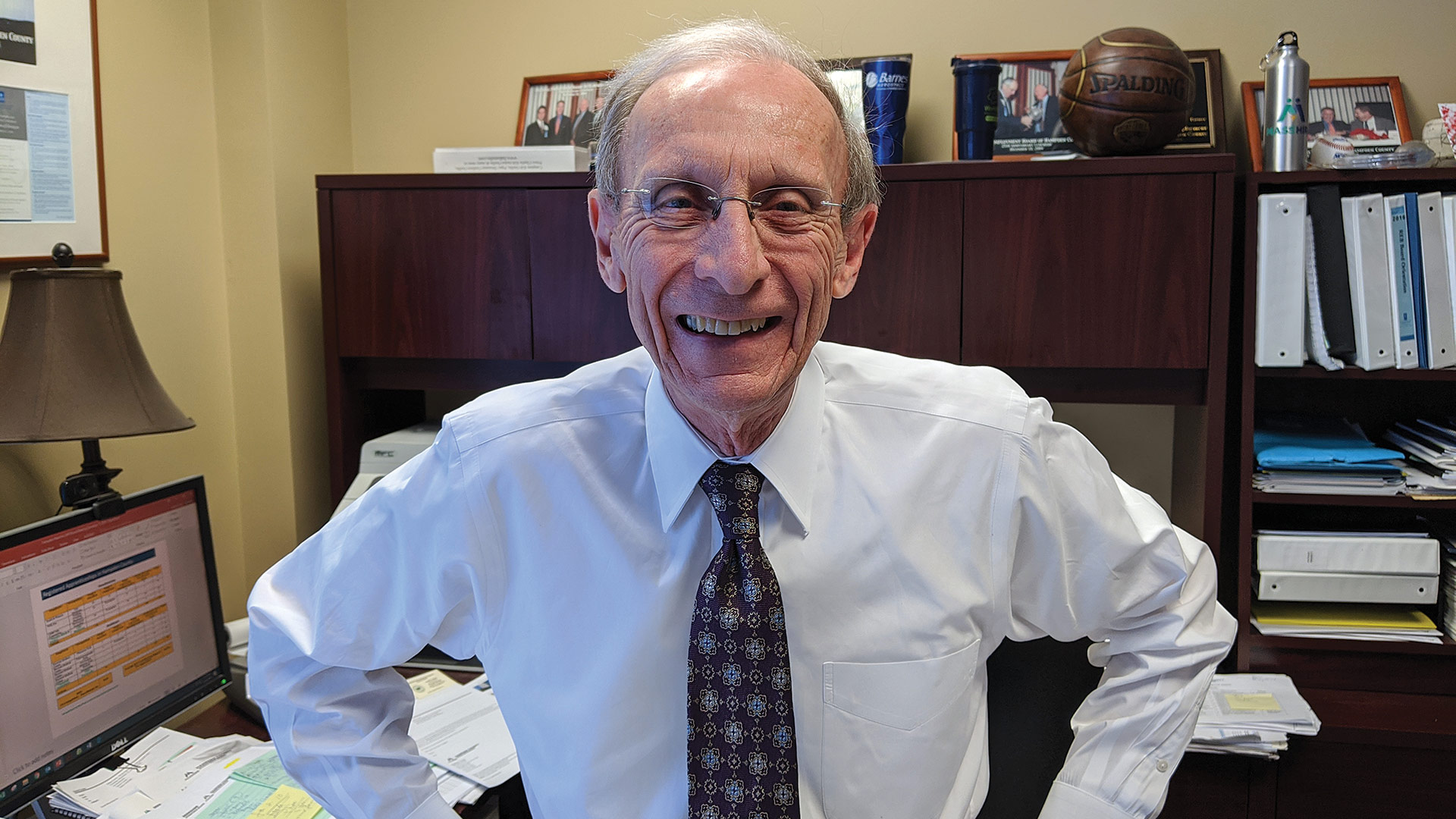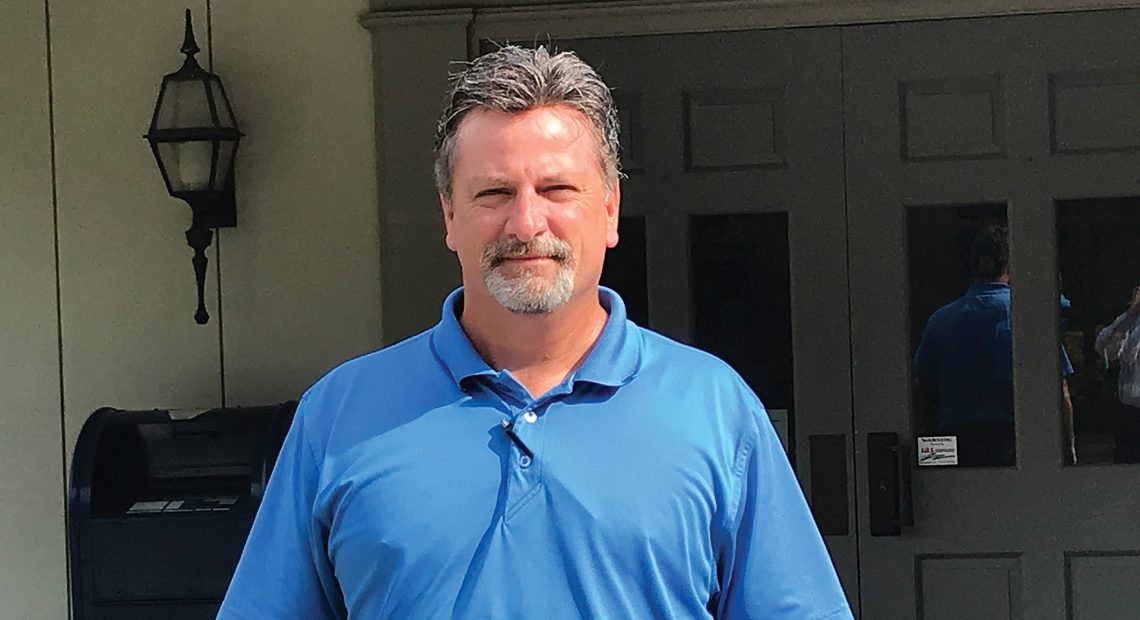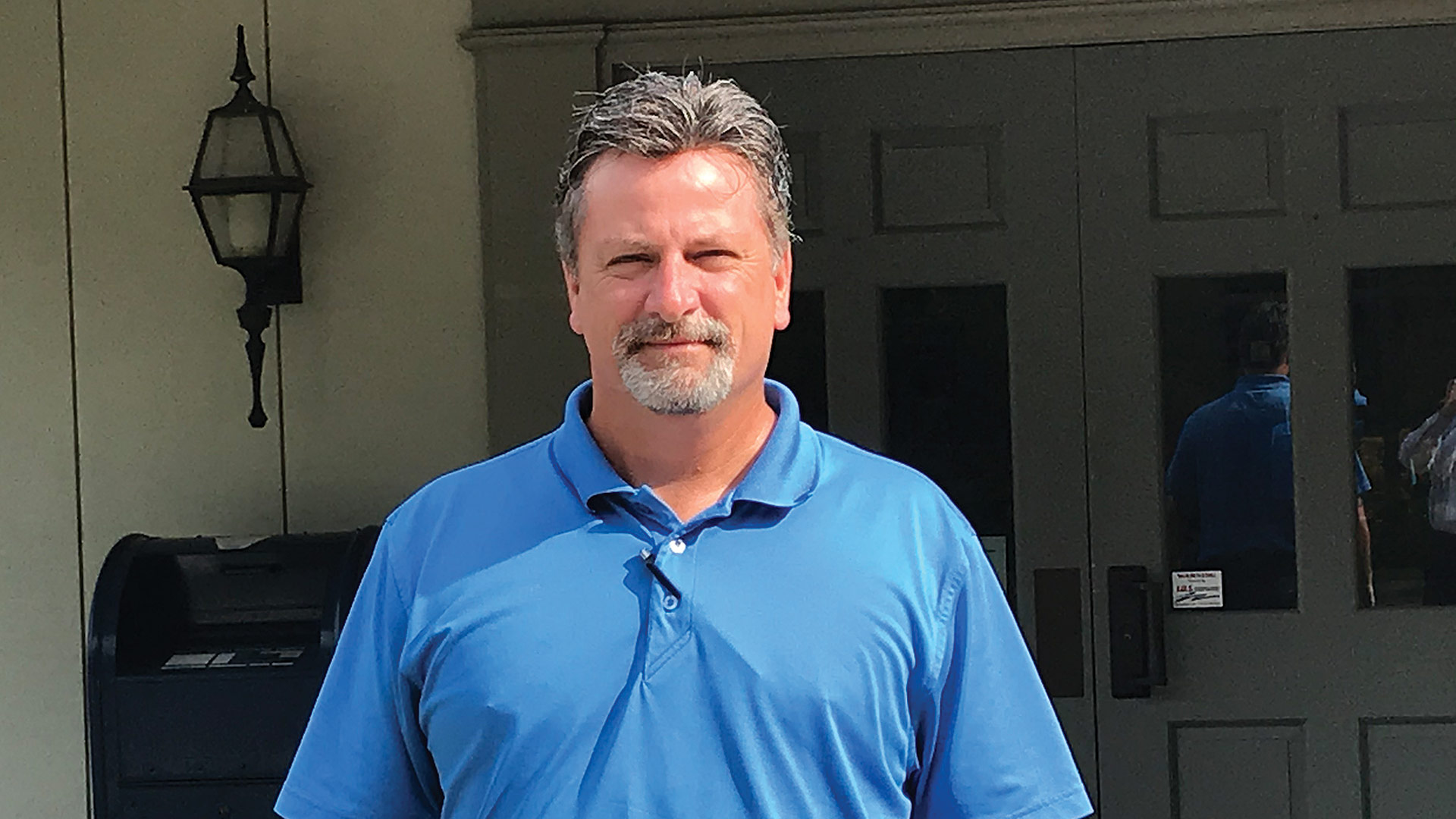Training Ground
 In all of the region’s key economic sectors, such as healthcare, education, and manufacturing, organizations say, almost with one voice, that the number-one barrier to growth is finding and keeping talented workers — a task made even more difficult at a time of historically low unemployment. BusinessWest sat down with one of the Pioneer Valley’s leading workforce-development voices to discuss an evolving, long-term blueprint to meet those needs — and grow the economy even further.
In all of the region’s key economic sectors, such as healthcare, education, and manufacturing, organizations say, almost with one voice, that the number-one barrier to growth is finding and keeping talented workers — a task made even more difficult at a time of historically low unemployment. BusinessWest sat down with one of the Pioneer Valley’s leading workforce-development voices to discuss an evolving, long-term blueprint to meet those needs — and grow the economy even further.
Healthcare. Education. Advanced manufacturing.
In any conversation about the economic character of the Pioneer Valley — both its rich past and promising future — those three sectors would be high on the list of key factors.
Indeed, a late-2018 report produced by the MassHire Hampden County Workforce Board and the MassHire Franklin Hampshire Workforce Board calls them ‘priority industries,’ meaning the most important to the region’s economic success, and they form the basis of a comprehensive ‘labor-market blueprint’ which aims to narrow workforce talent gaps and help companies — and the overall economy — grow.
A new report, issued just a few weeks ago, follows up on that blueprint, outlining the many ways employers, economic-development agencies, vocational and technical schools, area colleges, and other entities have partnered to do just that.
Needless to say, it’s a daunting challenge, said David Cruise, president and CEO of MassHire Hampden County.
“What we’re doing at the moment is actually going in and implementing the goals and strategies we laid out in the blueprint,” he explained. “One of the priority works we did was to identify, through looking at both supply and demand data, the three priority industries in Pioneer Valley region.”
Beyond healthcare, education, and manufacturing, however, the blueprint also identifies four other critical industries: business and finance; professional, scientific, and technical, including information technology (IT); food services and accommodation, which takes into account the impact of MGM Springfield; and sustainable food systems, a growing sector particularly in Franklin and Hampshire counties.
“We have been working pretty carefully within those seven industries, trying to collect data, trying to make certain the programs we run are consistent with that data,” Cruise said.
The priority industries have two things in common, he noted: long-term growth opportunities for individual companies and the sectors as a whole, and clear career pathways, where people cannot just land entry-level jobs, but steadily progress in their career from there.
“That’s why we’re spending a significant amount of time — and we’re very excited about the work we’re doing — with our regional education partners to make certain they’re developing programs and courses that align with those occupations, within those priority industries, that will allow someone to take courses and get into programs where there’s a pathway that will allow them to, yes, get a job, earn more money, and take care of their families, but also be able to see some pathway forward. That’s what we’re really focused on.”
It’s another way of looking at the value of retention, he added, which allows companies to avoid the time and cost of losing employees and training replacements, but also helps individuals gain career stability and establish deeper roots in the region.
“How do we put in place opportunities that will allow workers, both new and incumbent, to be able to move forward in these companies and in their occupation?” he asked. “That’s how you drive economic growth.”
Getting Resourceful
In the Pioneer Valley, Cruise noted, job growth isn’t generated by a few massive companies.
“We certainly have some publicly traded companies, some large companies, but the growth in the region is really being driven by small and medium-sized enterprises. And we want to support those companies because they don’t necessarily have all the resources they need. They struggle when they can’t retain folks; it becomes a tremendous cost factor for them, spending all that time recruiting and not being able to retain their recently hired folks. We have a significant commitment to try to work with those small to medium-sized companies throughout the Pioneer Valley.”
One way the MassHires do so is through partnerships with numerous vocational and technical high schools offering a wide variety of programs, most of them aligned with the priority initiatives outlined in the blueprint, he noted — not to mention the three community colleges in the Pioneer Valley.
The more recent report on blueprint progress examines programs at the voke-tech schools and community colleges — and Westfield State University — and how their programs connect with priority industries.

David Cruise says today’s successful small to medium-sized business understands the importance of community partners like colleges and economic-development entities.
“We did an analysis of the educational programs and pathways and courses that are really aligned with these occupations within these priority industries,” Cruise said. “We’re asking, ‘where are the gaps?’”
The blueprint creators took particular interest in specific ‘priority occupations’ currently in demand. In healthcare and social assistance, these include social- and human-service assistants; direct-care workers such as registered nurses, nursing and medical assistants, and personal-care aides; and clinical workers such as dental hygienists, pharmacy technicians, medical records and health IT; physician assistants; and physical and occupational therapists.
In education, priority occupations center on educators at all levels, including vocational-technical, STEM, and trades, as well as teachers’ assistants. In manufacturing, the key jobs include supervisors, production workers such as CNC operators and machinists, and inspectors, testers, and quality-control workers.
The report — which provides plenty of detailed evidence that training and degree programs are available in all these fields — will be updated every two years, with the hope that such programs will continue to expand and adapt to evolving workforce needs.
“We’re trying to fashion a regional workforce response as opposed to trying to fashion a workforce response in Hampden County or in Hampshire-Franklin. We want to look at a regional response,” Cruise said. “We think it makes more sense, and we have a better chance at mitigating the supply gap if we combat it that way.”
One important evolution concerns apprenticeships, he added. “We’ve been very aggressively involved in developing registered apprenticeships in healthcare and advanced manufacturing. We have about 74 apprentices involved in programming in the area right now, which is significant. A year and a half ago, we had 16. We’re being very careful about making certain the funding that we have and how we deploy the money is clearly aligned with where the employers are telling us the demand is.”
The two Pioneer Valley MassHires also connected with the MassHire Berkshire Workforce Board to produce yet another study, this one taking a five-year outlook on workforce needs in manufacturing — again, focusing in on key careers, including machinist, CNC operator, quality control, supervisor, and CNC programmer.
“We did an analysis of the educational programs and pathways and courses that are really aligned with these occupations within these priority industries. We’re asking, ‘where are the gaps?”
“We’re focusing our work — at least in this industry — around two things,” he explained. “One is trying to be certain the incumbent employees in our regional companies have the skills they need to be technologically relevant and be able to work in these spaces. But the ongoing concern is, where do we find entry-level CNC operators? In most of these companies, they’re resourceful enough and do enough internal training and continuous improvement where they can deal with some of these areas, like machinists and CNC programming. Where they really struggle is getting entry-level people, particularly operators, to come in.”
To address that need, MassHire is launching three training programs in February that should yield an additional 45 workers to join local companies.
“Even though we’re excited about it, that, in itself, is certainly not going to solve all the problems of supply and demand,” Cruise went on, noting, again, that manufacturing faces the same supply challenges as healthcare and education. “In all these industries, the demand is there. We’re trying to figure out ways we can increase the supply chain so we can minimize this supply gap in all three of these areas.”
Making Connections
One intriguing development involves making connections with comprehensive high schools in the region, Cruise told BusinessWest, recognizing that the state has been innovative in making career-development opportunities available to non-vocational high schools.
“We’re doing a lot of work with these school districts. They’ve made a decision that they want their students to have career-awareness and career-focus opportunities that will allow their students to look at different career pathways. Whether they’re going on to a two- or four-year college or directly to work, they want them to be more knowledgable about what those requirements are, what the pathways look like.”
To that end, the regional workforce boards have sent information to area superintendents about hiring needs and opportunities in the priority sectors and what students need to do to access them.
“In the next few weeks, we’ll send more information to the schools that will be very helpful to superintendents, counselors, and teachers, to help them provide guidance to their students — and also the parents — around career pathway opportunities. We’re really excited about that, and I’m convinced that, over time, students and parents will be making better career decisions.”
At the end of the day — any day — the main workforce challenge for businesses is simply finding the right talent and hanging onto it.
“The people who are able to work and want to work, in a lot of cases, have found employment, yet that supply gap is still there at our two career centers and the one in Greenfield as well,” Cruise said. “We continue to get customers coming in, but the customers that are approaching us need some additional supports and services before we feel they’re able to secure employment and particularly retain employment.”
Meanwhile, he noted, employers find they’re spending more resources than they’d like onboarding individuals they don’t retain over the long term.
“So we’re trying to find ways at our two one-stop centers to talk with our customers, look at the barriers that are the reasons they are not in the labor force, and try to use our community organizations and resources to do the best we can to mitigate some of those barriers.”
Sometimes it’s a simple lack of soft skills, or employability skills, that cause matches to fail — people not reporting to work, or people not having the ability to work in a team concept, he explained. “We can at least put the job seekers that approach us in a better position for companies to retain them. It’s hard work because many folks who are not in the labor market have more than one barrier that has to be mitigated, and that requires significant allocation of resources and time and staff to be able to do that. But we have to do that; that’s our job.”
Many employers say they can train for aptitude, but not attitude. “The employers we work with are saying to us, ‘send me someone who has the aptitude and willingness to learn, who’s going to be here every day, on time, and is going to be willing to accept the instruction we give them, be able to accept constructive criticism when it’s given,’” Cruise said. “Again, it’s something we’re pretty laser-focused on.”
MassHire is fortunate, he added, to work in a region full of companies, mostly small, that understand the value of partnerships and are willing invest time and resources in working with the workforce boards and colleges.
“The whole concept of going alone isn’t going to work anymore,” he said. “You have to figure out a way to be in some collaborative partnerships where you can leverage resources, look at your assets, identify your gaps, and put in place opportunities and programs that will respond to that. We do that well out here. I’m not suggesting it’s not done well in other places, but we think we have a little bit of a copyright on that.”
Joseph Bednar can be reached at [email protected]











 In all of the region’s key economic sectors, such as healthcare, education, and manufacturing, organizations say, almost with one voice, that the number-one barrier to growth is finding and keeping talented workers — a task made even more difficult at a time of historically low unemployment. BusinessWest sat down with one of the Pioneer Valley’s leading workforce-development voices to discuss an evolving, long-term blueprint to meet those needs — and grow the economy even further.
In all of the region’s key economic sectors, such as healthcare, education, and manufacturing, organizations say, almost with one voice, that the number-one barrier to growth is finding and keeping talented workers — a task made even more difficult at a time of historically low unemployment. BusinessWest sat down with one of the Pioneer Valley’s leading workforce-development voices to discuss an evolving, long-term blueprint to meet those needs — and grow the economy even further.

